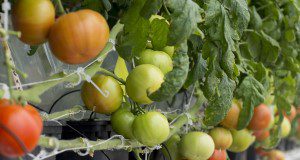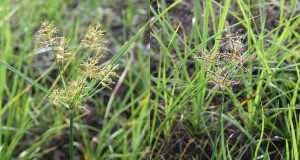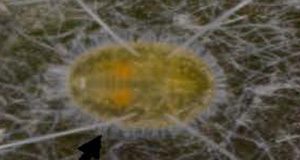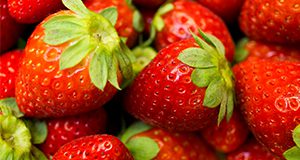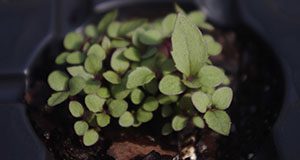Recently, new plant-breeding technology such as CRISPR gene editing has provided the potential to substantially improve crop breeding in agriculture. Considerable efforts have been devoted to apply this gene-editing technology in modern agriculture to increase crop yields and improve the quality of food ingredients, especially by many of the major agronomic seed-producing companies. In this new 4-page article, we outline the recent research updates and regulations on gene editing in crop improvement. Written by Sadikshya Sharma, Heqiang Huo, and Seonghee Lee and published by the UF/IFAS Horticultural Sciences Department.
https://edis.ifas.ufl.edu/hs1334
Tag: UF/IFAS Gulf Coast Research and Education Center
Biology and Management of Spanish Needles (Bidens spp.) in Ornamental Crop Production
All eight species of Bidens in Florida are commonly referred to as Spanish needles or beggar-ticks. This document focuses on Bidens alba and B. pilosa, which are common weeds in container nurseries and landscapes in Florida. This 6-page EDIS publication, written by Yuvraj Khamare, Chris Marble, Shawn Steed, and Nathan Boyd and published by the UF/IFAS Environmental Horticulture Department, is designed for landowners, gardeners, horticulturalists, and consumers hoping to learn more about Spanish needle classification and management.
http://edis.ifas.ufl.edu/ep572
Biology and Management of Yellow (Cyperus escuelentus) and Purple Nutsedge (C. rotundus) in Ornamental Crop Production and Landscapes
This new six-page document provides insight on characteristics and management techniques for both yellow and purple nutsedge, prevalent and persistent weeds in Florida. Written by Debalina Saha, Chris Marble, Nathan Boyd, and Shawn Steed and published by the UF/IFAS Environmental Horticulture Department, March 2019.
http://edis.ifas.ufl.edu/ep569
Pest Identification Guide: Bondar’s Nesting Whitefly—Paraleyrodes bondari
Bondar’s nesting whitefly (Paraleyrodes bondari) is an emerging pest in Florida that targets ficus species, hibiscus, sugar apple, guava, and citrus, among others. Learn to identify these tiny flies with this handy, 2-page guide written by Nicole A. Casuso and Hugh A. Smith and published by the UF/IFAS Entomology and Nematology Department.
http://edis.ifas.ufl.edu/in1204
CRISPR Gene Editing in Strawberry
Because cultivated strawberries are genetically complex, conventional breeding of strawberry can be difficult. Therefore, gene editing can be useful when developing strawberry varieties. This 3-page document discusses CRISPR gene editing in strawberry. Written by Seonghee Lee, Cheolmin Yoo, Kevin Folta, and Vance M. Whitaker and published by the UF/IFAS Horticultural Sciences Department, February 2018.
http://edis.ifas.ufl.edu/hs1315
An Overview of Strawberry Production in Mexico
This 5-page fact sheet written by Feng Wu, Zhengfei Guan, J. Jaime Arana-Coronado and Melvin Garcia-Nazariega and published by the UF/IFAS Food and Resource Economics Department provides an overview of Mexican strawberry production with an emphasis on the production in Central Mexico.
http://edis.ifas.ufl.edu/fe1014
Bloomify Red and Bloomify Rose, Two Infertile Lantana camara Cultivars for Production and Use in Florida
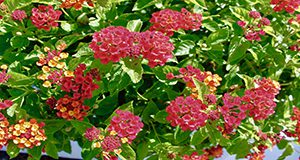 Lantana camara is a popular nursery and landscape plant in the United States; however, it is listed as a Category 1 invasive species to Florida due to its ability to hybridize with Florida’s native plant species Lantana depressa. In 2004, the UF/IFAS Gulf Coast Research and Education Center initiated a research program to develop two highly infertile L. camara cultivars, ‘Bloomify Red’ and ‘Bloomify Rose’. This five-page document discusses the production and characteristics of these cultivars. Written by Zhanao Deng and Sandra B. Wilson and published by the UF/IFAS Environmental Horticulture Department, October 2017. http://edis.ifas.ufl.edu/ep544
Lantana camara is a popular nursery and landscape plant in the United States; however, it is listed as a Category 1 invasive species to Florida due to its ability to hybridize with Florida’s native plant species Lantana depressa. In 2004, the UF/IFAS Gulf Coast Research and Education Center initiated a research program to develop two highly infertile L. camara cultivars, ‘Bloomify Red’ and ‘Bloomify Rose’. This five-page document discusses the production and characteristics of these cultivars. Written by Zhanao Deng and Sandra B. Wilson and published by the UF/IFAS Environmental Horticulture Department, October 2017. http://edis.ifas.ufl.edu/ep544
Biology and Management of Thickhead (Crassocephalum crepidioides) in Ornamental Crop Production
Typically found in shadehouses and shaded areas of nursery production, thickhead grows aggressively in containers and can outcompete nursery crops for water, nutrients, and light. This erect, sparingly branched, herbaceous annual, grows up to 4 feet tall and germinates over a wide range of pH, salt, and temperature conditions. This four-page fact sheet describes thickhead (Crassocephalum crepidioides) and various methods for its control in ornamental crop production. Written by Allison Bechtloff, Shawn Steed, Chris Marble, and Nathan Boyd and published by the Environmental Horticulture Department.
http://edis.ifas.ufl.edu/ep534
Spotted Wing Drosophila in Florida Berry Culture
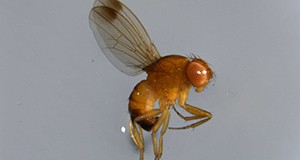
Spotted wing drosophila, Drosophila suzukii (Matsumura) (Diptera: Drosophilidae), is an invasive pest that was introduced into Florida in 2009. Spotted wing drosophila survives well under Florida’s climatic conditions. In 2014, losses to berry crops in Florida were estimated at $35 million. Losses are due to maggot-infested fruit, which is unacceptable for the fresh berry market, and puncture holes in the fruit made by egg-laying females. The holes lead to secondary infection by fungal and bacterial pathogens. This 4-page fact sheet written by Lindsy E. Iglesias, James F. Price, Craig R. Roubos, Justin M. Renkema, and Oscar E. Liburd and published by the Department of Entomology and Nematology describes the flies and some strategies to identify them and manage them in berry operations.
http://edis.ifas.ufl.edu/in839
